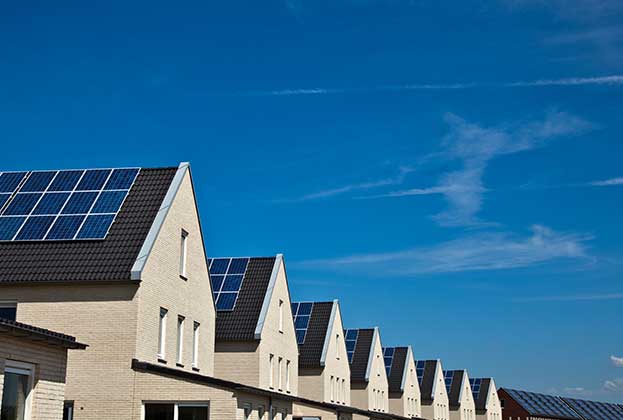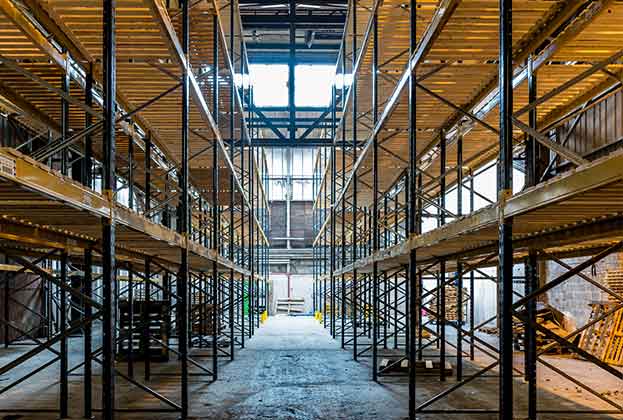Policy stability and long-term vision from the government is needed to enable the real estate industry to make a smooth transition to a low-carbon economy
The UK government has developed plans to improve the energy efficiency of all buildings by mid-2035. However, there are significant gaps in the regulations and, to date, government policy has not provided the stability or long-term vision that will enable the industry to make a smooth transition to a low-carbon economy.
Current policy
Rather than setting sustainability requirements, policy efforts have been aimed at increasing retrofitting supply chains, capacity and encouraging innovation. However, there are still major barriers to retrofit, identified by the UK Green Building Council, which apply across all sectors:
- High upfront costs, particularly for the newest technology
- A lack of finance mechanisms and a lack of coherent offerings for institutional investors
- No fiscal incentives
- Limited loan and grant schemes that have prioritised specific measures and prevented a whole-building approach.
The government’s flagship scheme has been the £2 billion green homes grant launched in September 2020. As part of the government’s 10-point plan, the green homes grant scheme was extended by £1 billion for a year after the initial programme became heavily over-subscribed, but was closed to new applicants in March 2021.
The scheme has been unable to mobilise the supply chain as planned. Oral evidence given to the Environmental Audit Committee from local authorities and industry bodies stated that the short-term nature of the funding would not give small retrofit providers sufficient confidence to scale up production. Coupled with delays in the funding vouchers being issued, the effect was for suppliers to retract due to ongoing uncertainty rather than expand capacity. To truly act as a catalyst, the scheme needed to be extended to provide a multi-year programme that would give suppliers the confidence to expand capacity. The same ethos should underpin all government efforts to deliver net zero goals.
To develop the green finance market further, both industry and policymakers need to build on this idea of having greater transparency and openness
Emily Williams, Associate Director, Residential Research
Driving private investment in decarbonisation
A similar critique of the wider UK policy landscape has been made by the Green Finance Institute, which stated in December 2020 that it “has yet to provide the market signals required to scale supply chains, jobs and investment in zero-carbon heating solutions”. The same theme emerges in the Sixth Carbon Budget pathway document, with the first policy recommendation being to set a clear direction and standards for decarbonisation.
To develop the green finance market further, both industry and policymakers need to build on this idea of having greater transparency and openness. Proposals from the Green Finance Institute include reviewing the Standard Assessment Procedure to fairly reflect the benefits of new technologies in homes, and developing common benchmarks to facilitate accurate reporting to showcase relative performance of Green REIT portfolio assets. A standardised methodology and data framework for Building Renovation Passports is needed from government to build investor confidence and encourage more private money to fund retrofit programs.
Government could also play a stronger role in providing backing for private investors through national development banks, an approach that has been successful in Germany and the Netherlands. The OECD estimates that credit guarantee schemes can bring in £5–£10 of private capital for every £1 of public capital over a five-to-ten-year timeframe. Similarly, the UK100 campaign Financing Local Energy proposes a National Net Zero Development bank and demonstrates that £5 billion of government development capital could unlock £100 billion of private investment.
Conclusions
If the UK real estate sector is to achieve the targets currently being set for energy efficiency and carbon consumption, policy needs to develop in several key areas:
- A consistent road map is needed that sets requirements across all sectors, not just certain tenures. This will create clear expectations, and encourage investors and occupiers to plan for long term change, while also making it more likely that green premiums or brown discounts will emerge and encourage behavioural change through market forces.
- More support should be given to early adopters. Certain sectors, such as social housing, are expected to be the pilot for trialling decarbonisation across a portfolio, but policy does not address the risk this poses if new technology or processes do not perform as expected. An insurance guarantee scheme that would give investors and property owners confidence to invest in new retrofitting or clean energy generation technology without taking on untenable financial burdens if new technology or processes do not perform as expected.
- There should be greater consideration of how the tax system could be used to support businesses and individuals to make the transition to net zero. New fiscal incentives could encourage homeowners to undertake retrofit works, such as 0% VAT on energy-saving products and materials, or stamp duty being linked to energy efficiency. Supporting low-income households will be critical to maintaining public support for net zero.
- The industry and government need to create clearer performance reporting requirements and a standardised data framework to draw increased private investment. There is considerable appetite from financial institutions to invest in decarbonisation, but more transparency around the performance of their investments would be needed to build scale.
- Incentives and penalties within the energy sector could be further rebalanced in favour of renewables. The recently announced plan to shift green surcharges from electricity bills onto gas bills is an important step in making clean energy the cheaper choice. However, rebalancing preferential access to grid capacity at times of excess energy supply to renewable sources could give investors further confidence in this area.
- As operational carbon emissions are reduced, embodied carbon will become an increasingly important consideration for regulators, developers and investors. A consistent carbon policy that sets targets and transparency requirements for new development will help investors manage risk. It will also give a consistent comparison point to assess whether it is more sustainable to hold and refurbish, or redevelop existing assets. This would also improve understanding and assessments of nature-based carbon sequestration schemes.
- A multi-year programme of government investment in retrofitting is needed to improve contractor capacity. Addressing the skills gap with incentives and support for green training programmes would serve a dual purpose by also helping with the levelling up agenda.
Read the other articles within Spotlight: Real Estate and the Carbon Challenge below
.jpg)



